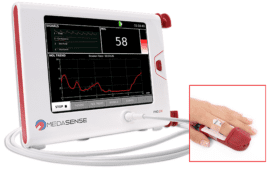New research from University of Sydney has found home-based video-game exercises can reduce chronic low back pain in older people by 27 percent, which is comparable to benefits gained under programs supervised by a physiotherapist.
Published today in Physical Therapy journal, this first-of-its-kind study investigated the effectiveness of self-managed home-based video game exercises in people over 55 years using a Nintendo Wii-Fit-U.
Low back pain (LBP) is the most disabling and costly musculoskeletal condition worldwide with most of this burden among older people who develop chronic symptoms. Chronic LBP becomes more severe and disabling with age, and can have a significant impact on physical functioning such as balance, strength and walking speed.
“Our study found that home-based video game exercises are a valuable treatment option for older people suffering from chronic low back pain as participants experienced a 27 percent reduction in pain and a 23 percent increase in function from the exercises,” said Dr. Joshua Zadro, a physiotherapist and postdoctoral research fellow from the University of Sydney School of Public Health.
“Participants practiced flexibility, strengthening and aerobic exercises for 60 minutes, three times per week at home without therapist supervision, and the effect of the 8-week video-game program was comparable to exercise programs completed under the supervision of a physiotherapist.
“Structured exercise programs are recommended for the management of chronic LBP, but there is poor compliance to unsupervised home-exercises. Our study however had high compliance to video-game exercises, with participants completing on average 85 per cent of recommended sessions.
“Video-game exercises are interactive, have video and audio instructions, provide feedback on a patient’s technique and scores them on the basis of their performance. These features are extremely motivating and likely explain why compliance to this program was much higher than other trials that have instructed patients to exercise without supervision.
“These exercise programs could be a unique solution to increase older people’s motivation to self-manage their chronic LBP through home-exercise and improve their ability to continue with their daily activities despite having pain.
“This home-based program has great potential as supervised physiotherapy visits can be costly and people who live in remote or rural areas can face barriers accessing these services.
“Older people with poor physical functioning also prefer home-based exercises as travelling to treatment facilities can be difficult.”
Senior author Associate Professor Paulo Ferreira, from the University’s Faculty of Health Sciences said the recent Lancet series on low back pain highlighted the need for low cost and accessible treatments for low back pain.
“Given the enormous global cost of chronic low back pain, increasing an individual’s capacity to self-manage their pain, while reducing the need for therapist supervision, should be a priority,” he said.
“Home-based video-game exercises could be a solution to this problem as they reduce reliance on a healthcare system with scare resources. Units are low cost at around $200 and patients wouldn’t need to travel to treatment clinics.
“These programs could be implemented under the current Medical Benefit Scheme (MBS) chronic pain care pathway in Australia, with only one session needed to set up the program and teach patients how to use it. Traditional exercise programs require many more sessions than are funded by MBS.
“This study highlights the potential cost-effectiveness of this new approach to the management of low back pain, particularly since it can be implemented on a large-scale and to people in remote communities with limited access to treatment providers.”
Dr. Zadro added: “This study shows a promising new direction in the treatment of older people suffering from low back pain, which is particularly important given the majority of treatment options for low back pain have not been tested in older people.
“The global population of people over 60 years old is expected to triple by 2050, so more research on this population is extremely important.”
Study details: The study was a randomised control trial of 60 participants aged 55 year and over, with the average age being 67 years. The trial received no funding from Nintendo Wii and no conflict of interest was declared.




